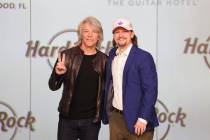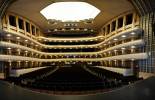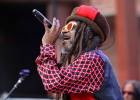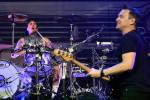With Bell in command, English orchestra dazzles
St. Martin in the Fields is a Greek revival church in Trafalgar Square in the city of Westminster, London. Built in the early 1700s, it opened in 1724.
It is one of dozens of such churches in London, but what makes it important today? It is the home of one of the world’s great chamber orchestras, the Academy of St. Martin in the Fields.
This virtuoso orchestra was founded in 1958 by Sir Neville Mariner and is celebrated not only for its touring and recording but primarily for its technical and artistic reputation, the envy of musicians and music fans the world over.
A little less than a year ago, the Academy scored a major achievement: It convinced renowned American violinist Joshua Bell to become its music director and principal soloist. The match is perfect, as a packed house at The Smith Center’s Reynolds Hall learned Tuesday.
The program began with Bell in the solo role on J.S. Bach’s Violin Concerto No. 2 in E Major. The first movement began with three hammerlike strokes serving to announce the movement’s principal theme, but also alerting the audience what it was in for: an evening of rich and sonorous string tone.
That sound prevailed throughout the slow movement with Bell playing a delicately embellished yet expressive melody. The final movement produced a feeling of almost irresistible forward drive.
The second work was Beethoven’s Symphony No. 1 in C Major. The composer was already established in Vienna as pianist, conductor and composer, but he had yet to tackle the symphonic form. This first symphony is more classic than romantic. It shows strong influences of Haydn and Mozart but with unmistakable hints of the revolutionary fervor that was to follow. In fact, one German critic wrote that it was “the confused explosions of the outrageous effrontery of a young man.” If only he knew what was to follow.
For the Beethoven, Bell served as concertmaster, seated in the traditional spot but on a piano bench in place of the customary chair.
From there he could not so much conduct as guide the orchestra using his head, shoulders, elbows, bow (when it was unoccupied), indeed all parts of his body communicated tempos, phrasing, style and dynamics. Not that this extraordinary orchestra needed coaching, but it kept everyone aware of the tiniest subtleties of performance.
After intermission, Bell soloed once again, this time in Camille Saint Saens’ “Introduction and Rondo Capriccioso for Violin and Orchestra.” The second part, the rondo, is reasonably familiar listening, one of the lighter of his compositions. Sometimes melancholy, mostly brilliant, it is a tour de force for the soloist.
The closing work was Franz Schubert’s “Death and the Maiden,” originally composed as a string quartet but now expanded for all the strings. Bell assumed the concertmaster’s role again and inspired his colleagues to emulate his poetic and graceful approach as virtually demanded by Schubert.
Bell’s rich warm sound was not totally the performer’s doing. Part of it can be attributed to his $3.5 million Stradivarius, the same violin he used to conduct a famous social experiment at a subway station in Washington, D.C.
Bell sat on the ground, unpacked his violin and played Bach for about 45 minutes. Of the passers-by, only one older man stopped for a brief time and then moved on. Several women with children in tow passed by. Only the kids seemed intrigued, not the adults. In 45 minutes, Bell collected $32 in tips. The night before he played a concert with an average ticket price of $100.
REVIEW
Who: Academy of St. Martin in the Fields with Joshua Bell
Where: Reynolds Hall at The Smith Center for the Performing Arts
When: Tuesday
Grade: A




























